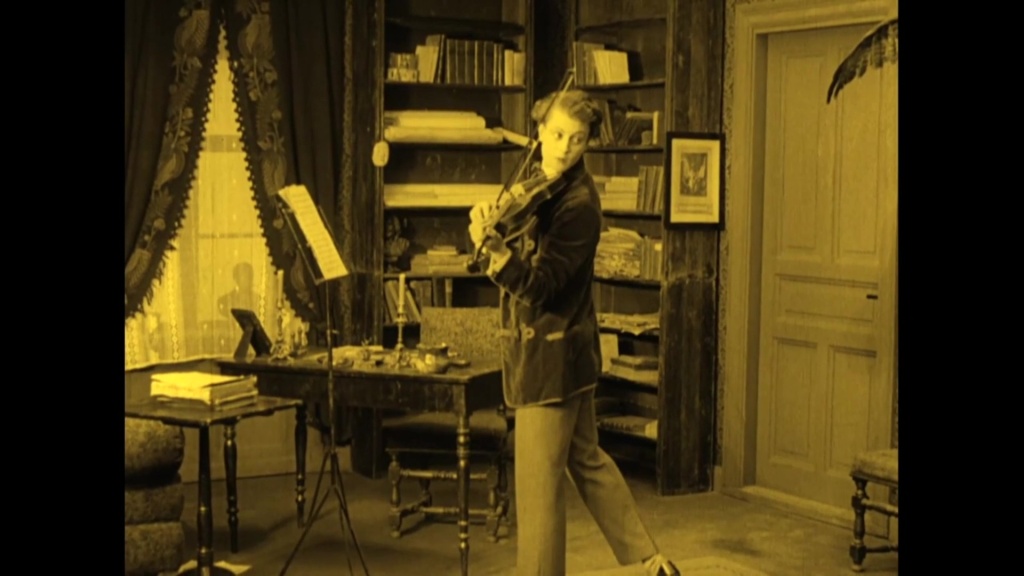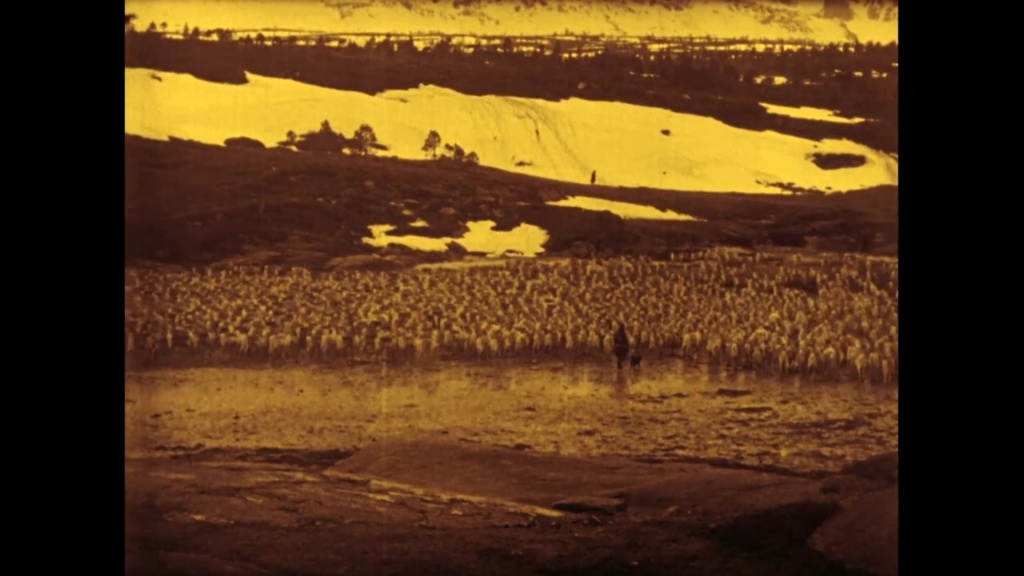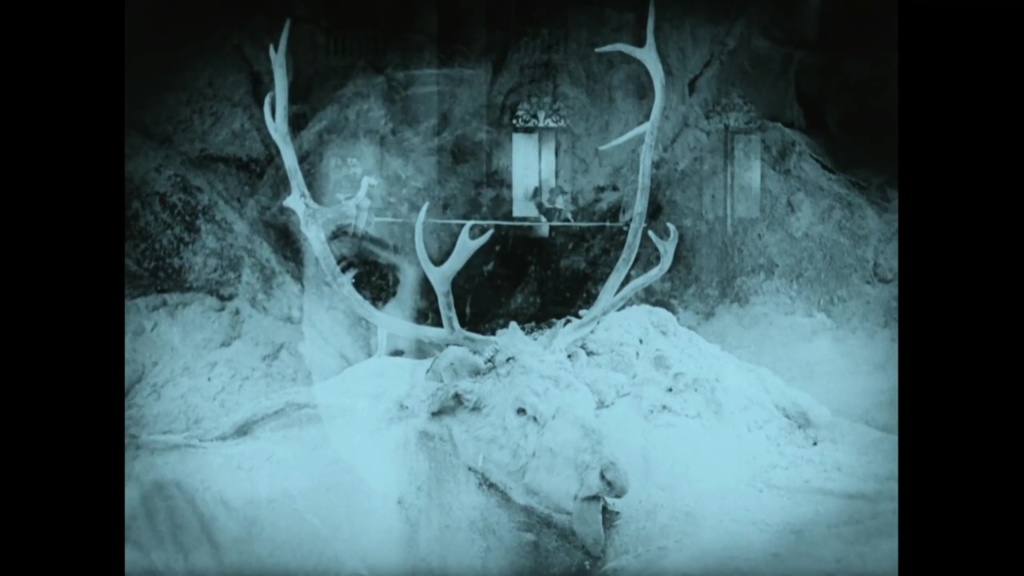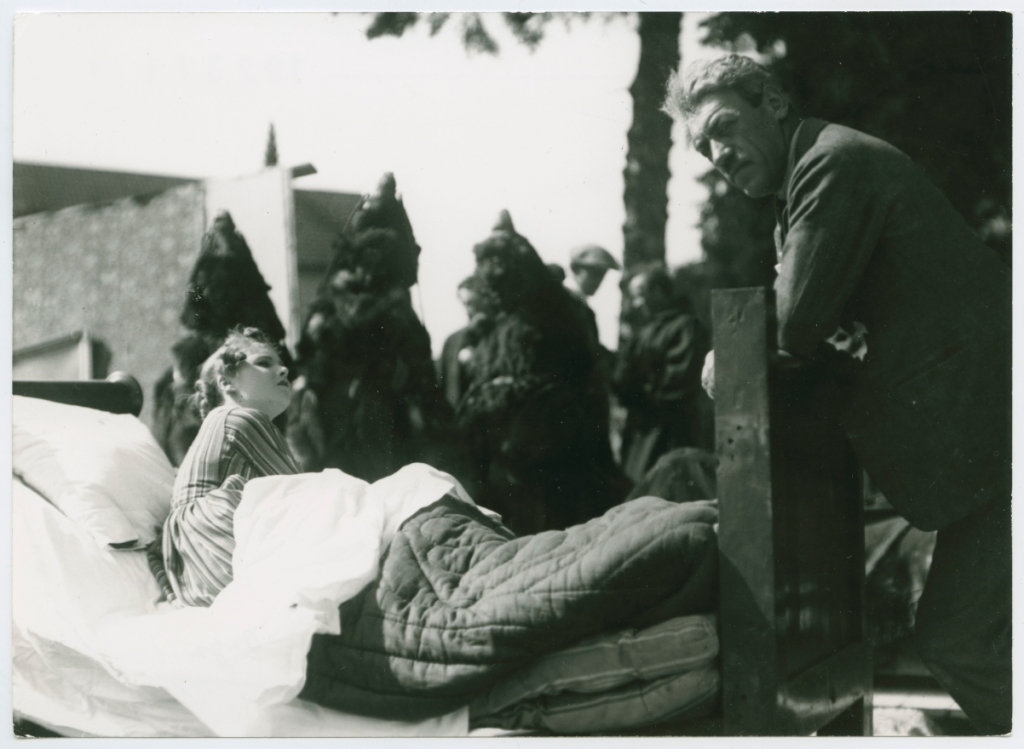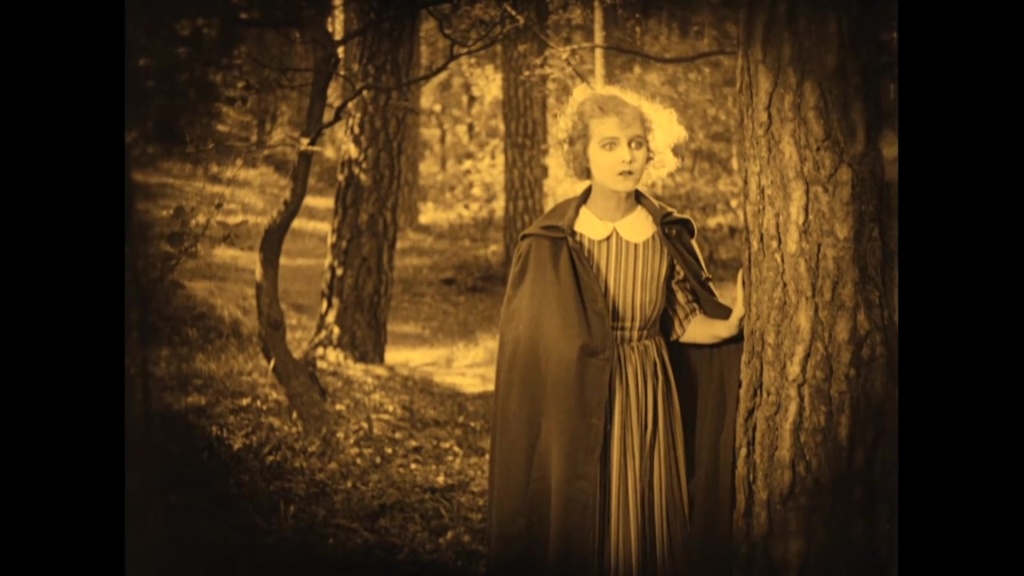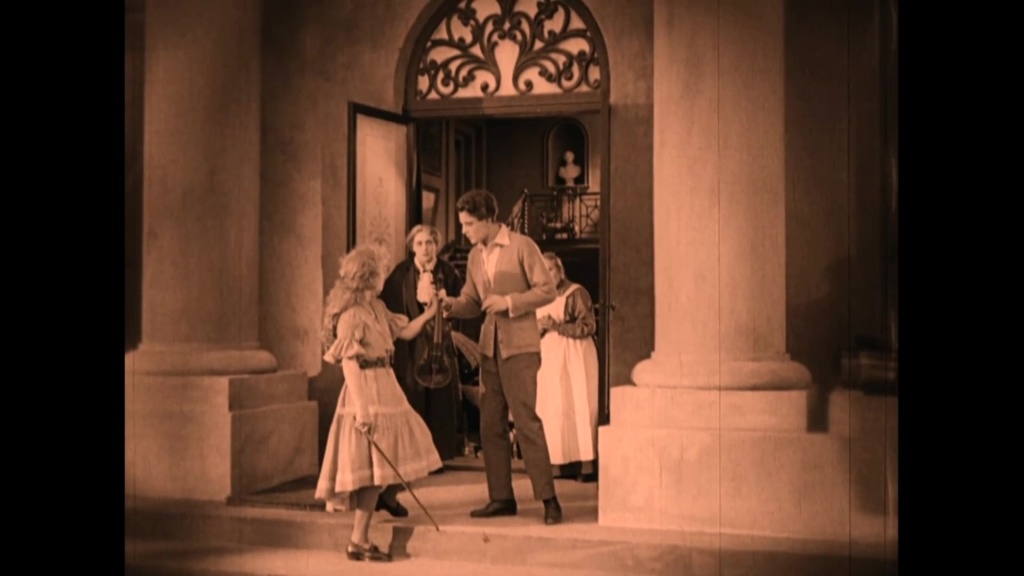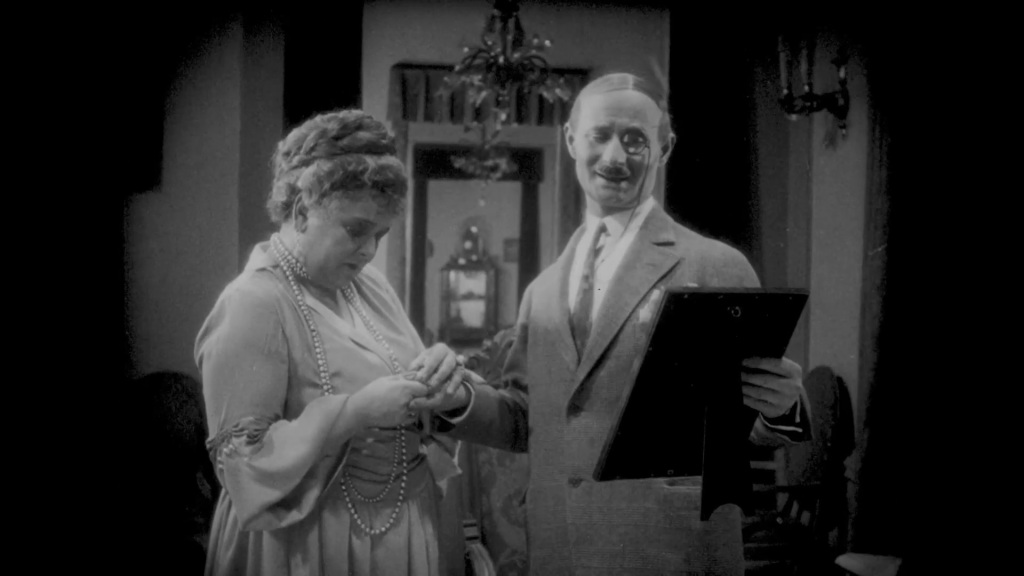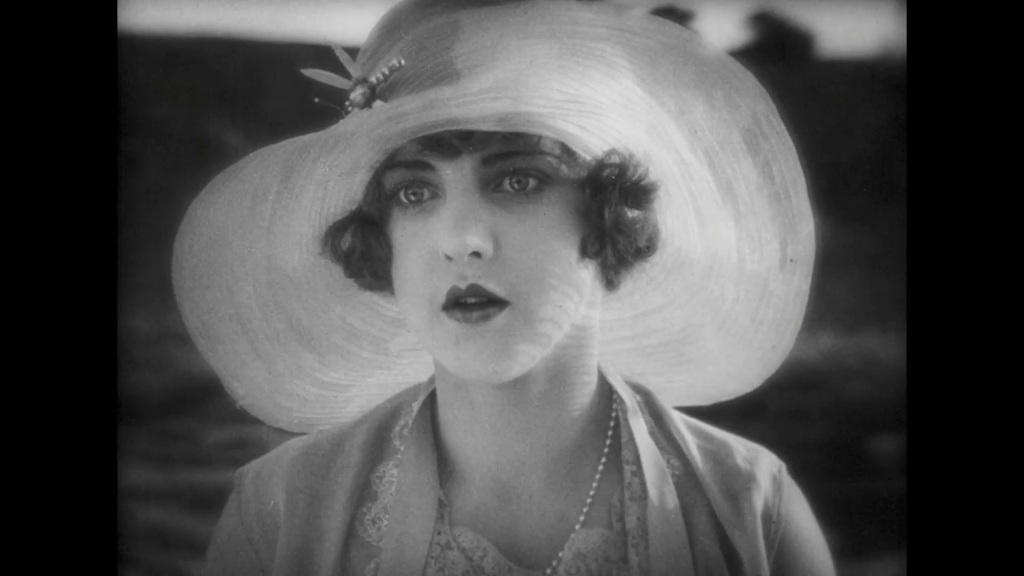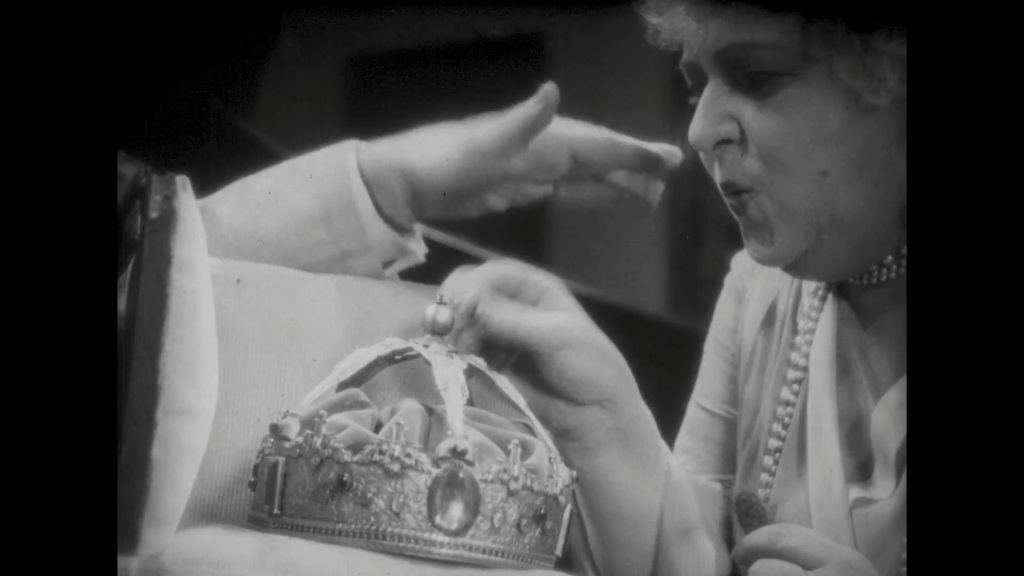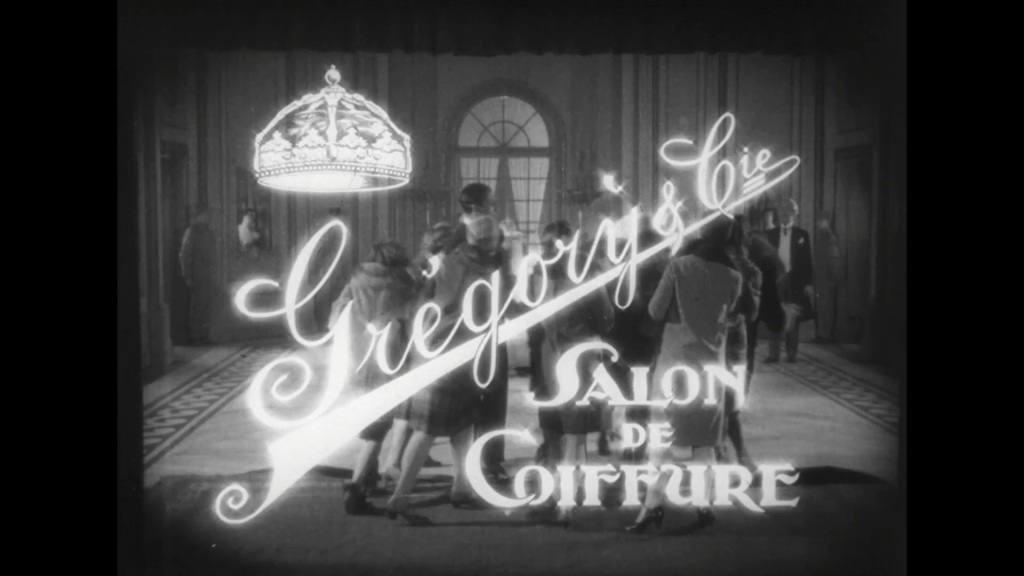This piece is a follow-up from one I wrote last year on Stiller’s Sången om den eldröda blomman (1919). Since then, I have tracked down a copy of the novel on which the film was based: Johannes Linnankoski’s Laulu tulipunaisesta kukasta (1905). I’m very glad I did, and the following are some notes on the relationship between book and film, as well as some of the shared context between them.
Firstly, the very existence of this book in English is noteworthy, since no other translation of it has been issued since 1920. (Of course, the late nineteenth and early twentieth century saw a huge number of translations from continental authors, which is still often the only way to find them in English. Always fascinated by such editions, I have read a good deal of the likes of Hugo, Heine, Hoffmann, Sand, Balzac, Maeterlinck, D’Annunzio, Anatole France etc. via lovely old hardbacks from a century ago.) Linnankoski’s book was translated as The Song of the Blood-Red Flower for the edition published in London by Gyldendal. Though there is no date in the book, worldcat.org lists the publication date as 1920. (My copy has an owner’s name inscribed with the date 16 January 1924.) The American edition (New York: Moffat, Yard & Company, 1921) is the same translation, which (unlike the British edition) credits the translator as W. Worster. Given that the British edition came out in the same year as Stiller’s production was released in the UK, I wonder if the translation (or its release) was directly inspired by the film.

On this note, a little research reveals that Sången om den eldröda blomman was titled “The Flame of Life” for its British release. The film was trade shown at the London Pavilion in August 1919, only four months after its premiere in Sweden in April 1919. This was a swift import from the continent, and the UK distributors—Western Import—clearly thought it could sell. Indeed, it was part of a series of “selected masterpieces” that were trade shown under the guise of the year’s best films. (Going by comments in the trade press, a Swedish import was something of a novelty for Western Import, who had mainly imported American products for the UK market.)

“The Flame of Life” was well received by its first audiences, and the film was released publicly in May 1920. In fact, it followed closely on from the release of another Stiller film, Herr Arnes pengar (1919), which was distributed under the title “Snows of Destiny” in the UK in February 1920. (I like how they timed the respective cinematic seasons of these films to the seasons for audiences: the wintry Herr Arnes pengar for a late winter release, the summery Sången om den eldröda blomman for a summer release.) I’ve not yet found out to what extent “The Flame of Life” was altered from the original Swedish version. It was listed as seven reels, which is the same as the original, but obviously this isn’t a precise length. A trade piece says that they recommend cutting the scene near the end in which Kyllikki strips down to her underlayer to defy her father—but this is the only snippet of information I can find. Of course, Kyllikki was not called Kyllikki, nor was Olof called Olof. The Kinematograph and Lantern Weekly plot synopsis reveals that “The Flame of Life” not only anglicized but changed entirely the names of people and places from the Swedish original. Instead of Olof Koskela, there is David Leaford. Instead of Kyllikki Moisio, there is Bessie Bourne of “Fairylight Farm”(!).


Thankfully, the book edition of 1920 offers a more faithful adaptation of names and places. Though it provides English equivalents for the nicknames of Olof’s lovers, the original Finnish proper names are kept as they are in the original. As for the book itself, I very much enjoyed it. And while the film bears a strong resemblance to the novel, there are some interesting divergences.
From the first pages, it’s clear that the book shares with the film an interest in depicting and imagining the natural world. There is a great deal of animism in Linnankoski’s novel: the forest talks, the house talks, and Olof address one monologue to the “the evening gloom” (140). All of Olof’s lovers are given the names of flowers or animals or natural spirits. I feel that this is more extensive than in the film—though given how much of the original film remains missing (see my earlier post), I can’t be sure that the film once followed the book more closely in this regard. But there is also more depth and backstory given to all of Olof’s lovers, and their connection with nature is also interrogated across the novel.
To Olof, the women appear as manifestations of a fecund natural world. But the reader is also offered more glimpses into their inner lives: unlike in the film, the women are given interior monologues as well as lengthier conversations with Olof. He and “Hawthorn” philosophize about love, for example, while “Clematis” narrates her own story-within-a-story: a dark, obsessive fairytale. The tone of the book is also more direct, which is to say explicit, than the film. Linnankoski makes clear from the outset that Olof’s love is as dangerous and destructive as it is enticing and erotic. Here he is with “Gazelle” in an early chapter—expressing his desire in violent terms:
‘If anyone had told me, I would never have believed love was like this. It’s all so strange. Do you know, I want to…’ / ‘Yes? Tell me!’ / ‘Crush you to death—like this!’ / ‘Oh, if I could die like that—now, now…’ / ‘No, no—but to crush you slowly, in a long, long kiss.’ (19)
A post-coital scene later in the book describes how these “two human creatures thrilled with sorrow and joy in the pale dawn” (54-56). Another lover tells Olof that she would die for him, while other lovers are “crushed” by his embrace (87). Even his first kiss with Kyllikki—“The girl that’s proud beyond winning!” (91)—is tinged with violence: “On her under lip showed a tiny drop of blood”, which Olof then drinks (119-26).
Linnankoski’s language connects sex and death but also familial and romantic love. Later, Olof is likewise “crushed” by the shame brought by his mother finding him with Elli. And, in a startling scene with his lover “Daisy”, there is this moment: ‘“I love you”, she whispered, “as only your mother ever could!” / Olof turned cold. It was if a stranger had surprised them in an intimate caress” (87). We also learn that Olof had a sister called Maya, who nursed him through childhood illness but then caught it herself and died. Olof imagines her as an adult: “Like mother’s eyes—only with all, all the fire of youth—almost like Kylli…” (140). His longing for Kyllikki is also a longing for a familial embrace, the longing for home also a kind of longing for the female body.
The central sequence of the film—the ride down the Kohiseva rapids—is more elaborate in the book. Olof’s strength is evident from the outset, when he hurls his father across room “as a ball is thrown” (26). But his daring with logs on the river is more elaborately built up across chapters: he actually makes an earlier attempt to ride the river at night, with only the other men watching: this is not a dare but a task to do as part of his logging work (30-36). Two girls (“Pansy” and “Rowna”), and at least one season, pass before the main event. The novel’s sequence of “shooting the rapids” is also given more context: it is a bet that Olof makes against a man called Redjacket, who likewise must perform the ride (94f.). Rejacket goes first and soon falls into the river. Olof completes the course (with more exposition than the film offers to clarify the route etc.), but in his leap to safety he ends up with a bloodied face from the impact. The chapter is an entertaining read, but it cannot compare to the sheer thrill of watching the ride unfold on screen—especially with Järnefelt’s glorious orchestral music.
From this point on, the novel is increasingly more elaborate than the film. The book has thirty-two chapters compared to the seven chapters of the film (each “chapter” marking the start of each of the seven reels). While the film has a more complex series of events leading up to Olof’s rejection by Kyllikki’s father (discussed below), the novel details how Olof is emotionally wounded by Kyllikki (113-14) before being turned away by her father. The latter scene is in fact narrated by Olof to Kyllikki in the form of a song that he sings as he passes on his way down to the river (116-18).
The differences increase in the subsequent chapters. In “Dark Furrows” (162f.), we realize that years have been passing with the progressions of chapters. Olof looks in the mirror (per the film) and sees he’s ageing—we are even told he has a moustache (not per the film!). In fury at himself and his fate, he smashes mirror (164) then sets out “To the Dregs” (165f.). This town scene is set on a warm light summer’s night, not the rainy night of the film. Per the film, Olof drinks with one girl, who then offers him her friend: it is Elli, the “Gazelle” of the opening chapter/scenes. However, in the film Elli commits suicide at the horror of being discovered by the man who “ruined” her. In the book, she merely she sends him a note the next morning saying that she’s gone away—there is no implication of death.
When, at this point, Olof returns home in the film, he learns that his parents are dead. But in the novel, the chapter “By the Roadside” (178f.) relays Olof meeting a shepherd who informs him that while Olof’s father is dead his mother is still alive—but only just. Herein lies a major difference between film and novel. In Linnankoski’s narrative, the chapter “The Cupboard” (182f.) sees Olof go home to his mother and his brother—the latter a character not even in the film at all. His mother reveals that she once caught her husband with another woman, the same way she caught Olof with Elli—and her husband hurled an axe in his fury. (She shows them the mark on the cupboard door.) This revelation deepens our sense of why she reacted with such hurt at Olof’s behaviour and makes his father’s hypocrisy more apparent. It also makes it clear that Olof is not some one-off Don Juan, but actually part of a culture in which men mistreat women. (This is a theme that the book develops further across its final third, but which the film does not.)
When Olof’s mother dies, Olof gives his share of the estate to his brother. Instead of living from his inheritance, he seeks to make his own fortune—building his own house on a hill and draining the land for use (192f.). (At this point, the novel clarifies that six years have passed since Olof left home. This timeline is not made explicit in the film, at least in the form that it survives.)
There then follows chapters of correspondence between Olof and Kyllikki (200f.) before their reunion and Kullikki’s father agreeing to her marriage. It is at this point that the film ends, but the novel has another nine chapters (80 pages) left. And this is where the strategies of Stiller’s adaptation become clearer. In the novel, the wedding fete quickly becomes a scene of conflict. A stranger tells Olof that Kyllikki is not a virgin. Olof threatens him, dances a furious polka with several girls, then smashes the fiddler’s violin. Stiller’s film transposed this scene to when Olof is first in Kyllikki’s village, and the fight is part of the reason he leaves soon after. It allows an extra element of violence to lead to the break, whereas in the novel it is a prelude to the real confrontation, which is between Olof and Kyllikki. Olof relays what the stranger told him and accuses her of having given away what was “his”. Understandably, she’s pretty pissed off at Olof:
The girl was trembling in every limb. She felt a loathing for the man before her—and for all his sex. These men, that lied about women, or cried out about what was theirs on their wedding night, raved of their happiness, demanding purity and innocence of others, but not of themselves… she felt that there could be no peace, no reconciliation between them now, only bitterness and the ruin of all they had hoped for together. (225)
This chapter really develops the cultural context for Olof’s actions. As foreshadowed by the behaviour of Olof’s father (relayed by his mother), this is a patriarchal culture of grotesque double-standards. Having lived a carefree life and treated many women exceedingly shoddily (leaving them heartbroken and even ostracized), Olof now expects sexual “purity” of his bride. Kyllikki retorts that the stranger was lying. But even if she were not in fact a virgin, the sheer hypocrisy of Olof’s anger would be enough to make her furious with him.
Reading the novel after having seen the film, I started to wonder at this point if Stiller had excised something quite radical from the original text. For the novel continues for quite some time after the couple’s marriage and the revelation that Olof is prone to jealousy, anger, and unrest. In the next chapter, Olof becomes a “somnambulist” in their marriage. Kyllikki asks him: “Are my arms not warm enough to hold you; can your soul not find rest in my soul’s embrace?” (231). They talk about his unease and the legacy of his former life. Even when they embrace, Olof is distant. As Linnankoski marvellously describes: “It was as if the soul that looked out of his eyes had suddenly vanished, leaving only a body that stiffened in a posture of embrace” (233).
In subsequent chapters, Olof’s past comes back to haunt him. Firstly, “Clematis”—the girl who narrated the sinister fairytale about loyalty and death—writes to him, informing Olof that their son is now two years old (239f.). Olof then encounters Clematis, who is now married and has had a second child with her husband. Observing her new domestic life (and reflecting on his own guilt and unhappiness), Olof asks for her forgiveness (244f.).
Secondly, in a chapter called “The Pilgrimage” (the title of the film’s final chapter), he encounters another—unnamed—former lover. She gives an amazingly angry monologue, which again links Olof’s behaviour with the broader way in which women are treated in this patriarchal society: “Oh, I could tear the eyes out of every man on this earth—and yours first of all!” (255). And in the chapter called “The Reckoning”, Olof confesses to Kyllikki everything that he has done in his former life (264f.). These chapters are absent from Stiller’s adaptation, but the remorse and despair of “The Reckoning” surely informs the scene in the film in which Olof sees himself in the mirror. That scene, and its intensity of framing and performance, condenses the tone of the novel’s final chapters in a single set-piece.
In the novel, this “reckoning” is followed by another epistolary chapter. Through his letters to Kyllikki, we learn that Olof goes back to his plot of land on the hill and builds his house. And through Kyllikki’s reply, we learn that she has given birth to their son (271-76). Finally, in the last chapter, “The Homecoming” (277f.), Kyllikki and the child arrive at the house that Olof has built and prepare for their future together.
Reflecting on book and film, I think that all the changes made to the novel by Stiller and his co-screenwriter Gustaf Molander make absolute sense. In my original post I said that the film sometimes seemed episodic (perhaps, in part, due to the missing material), but compared to the novel it seems much tighter. By eliminating extraneous characters (Olof’s siblings, some of his lovers) and events (his child with another woman), Stiller enables a more concentrated narrative. Similarly, by making Elli commit suicide the film is able to condense a far lengthier and more expositional section of the novel into a single dramatic event. In this respect, the film is certainly more taught and effective than the book. What the novel has that the film perhaps lacks is the sense of interiority to the female characters. Linnankoski gives some remarkably powerful, almost feminist, monologues to the women wronged by Olof—and the book more thoroughly outlines Olof’s hypocrisy and faults. Much of what is at best implicit in the film is made explicit in the novel. It’s true that the film lacks the female subjectivity so foregrounded in the latter part of the novel, but Stiller nevertheless manages to capture the tone of Olof’s remorse through different means. Throughout, Stiller finds superbly cinematic means to convey the content of the written text. The film is so successful and satisfying at the end that I wouldn’t wish it changed.
In summary, my reading of Linnankoski’s novel has increased my appreciation of Stiller’s film—just as seeing the film enhanced my reading of the novel. For curious anglophone readers, you don’t even need to track down (as I stubbornly did) a physical copy of the book, since the American edition is readily available for free online via archive.org. I heartily recommend both the film and the book.
Paul Cuff



































































































